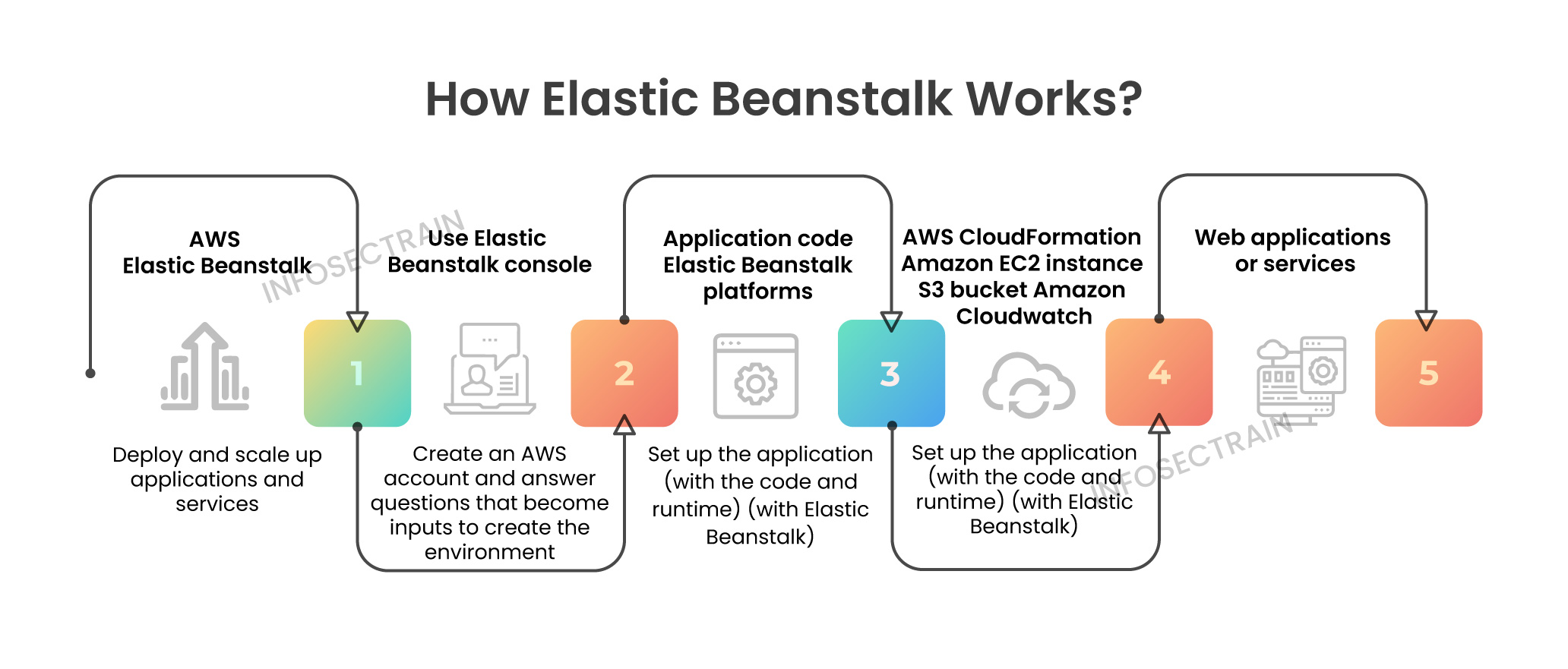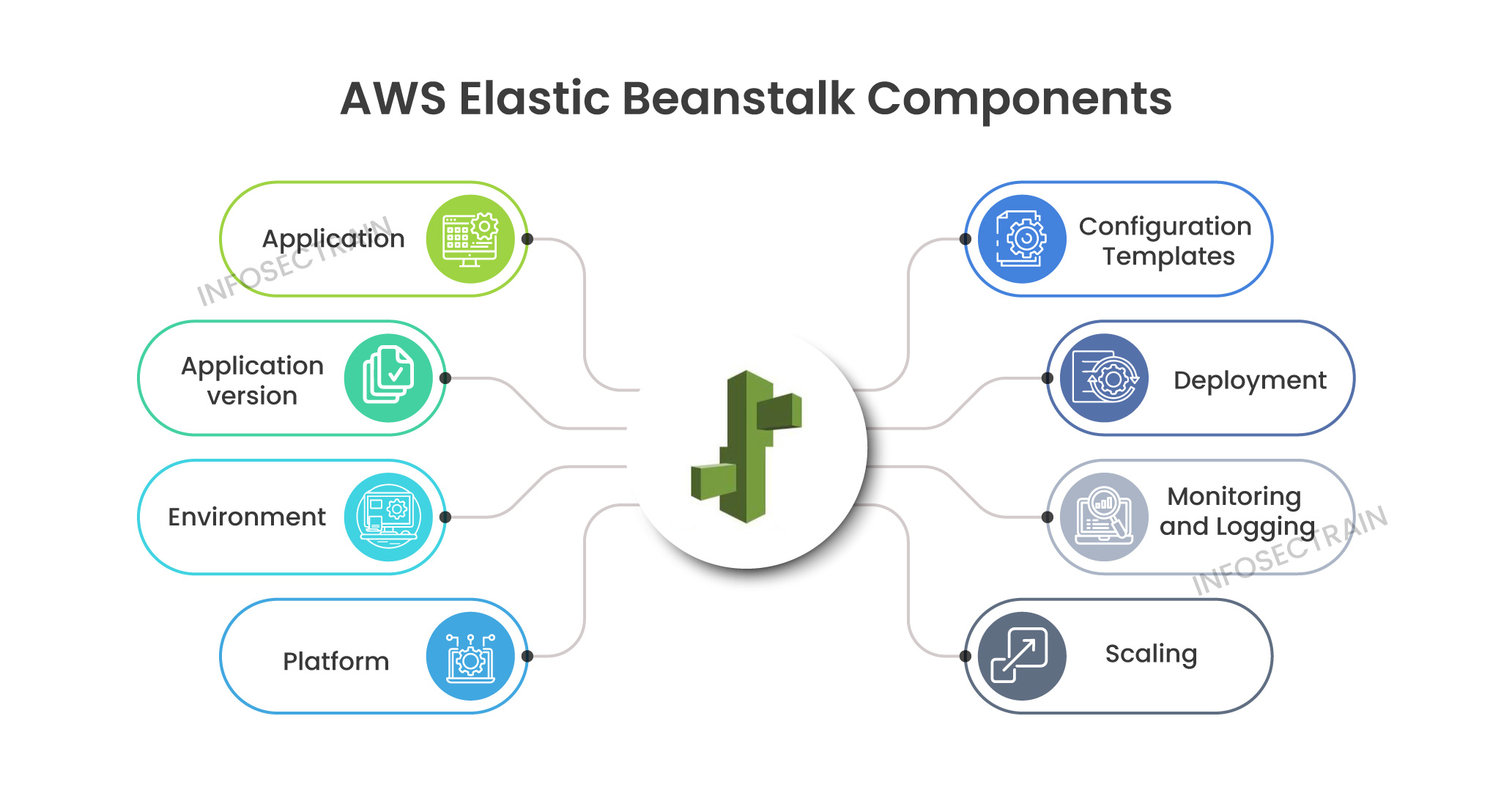What is AWS Elastic Beanstalk?
Web hosting platforms that offer Platform-as-a-Service (PaaS) provide a complete computing platform and solution stack for hosting web applications. In PaaS, the hosting platform provides a complete development environment, including the operating system, web server, database, and other software components required to run the application. In the market, some application hosting platforms provide Platform-as-a-Service (PaaS). Some of them are:
- Google App Engine
- Scalingo
- Python Anywhere
- Elastic Beanstalk
- Azure App Service

Table of Contents
What is AWS Elastic Beanstalk?
Features of Elastic Beanstalk
How Does Elastic Beanstalk Work?
AWS Elastic Beanstalk Components
What is AWS Elastic Beanstalk?
Amazon Web Services (AWS) Elastic Beanstalk is a fully managed service that enables deploying and administering applications on the AWS cloud. With Elastic Beanstalk, developers can quickly deploy and run web applications using a variety of programming languages and frameworks, including Java, .NET, PHP, Node.js, Python, Ruby, and Go.
Elastic Beanstalk is a PAAS (Platform-as-a-Service) service used for the web interface and command-line interface (CLI), simplifying deploying, managing, and scaling applications. Developers can easily upload application code, and Elastic Beanstalk will automatically handle the application’s deployment, scaling, and load balancing.
Some of the beneficial features of Elastic Beanstalk as a platform-as-a-service include:

Features of Elastic Beanstalk

How Does Elastic Beanstalk Work?

AWS Elastic Beanstalk Components
AWS Elastic Beanstalk comprises several components that work together to provide a scalable, fully managed platform for deploying and managing web applications. Here are the main components of Elastic Beanstalk:

- Application: An application in Elastic Beanstalk represents the logical container for your web application. It consists of one or more environments where your application can run.
- Application Version: An application version represents a specific version of your web application’s code and configurations. It is typically a package or bundle of your source code, libraries, and configuration files that are deployed to an environment.
- Environment: An environment is an instance of your application that operates on a collection of Amazon Web Services (AWS) resources. It includes the compute capacity, such as Amazon EC2 instances, and any additional resources your application requires, such as a database. Each environment has its own URL and configuration settings.
- Platform: A platform is a predefined runtime environment that Elastic Beanstalk uses to run your application. It includes an operating system, a web server, and any other software components required to run your application. AWS provides several platform options, such as Node.js, Java, .NET, Python, etc.
- Configuration Templates: Configuration templates define the settings and resources for your Elastic Beanstalk environments. They include options such as instance types, scaling settings, environment variables, and security configurations. You can modify templates to suit the specific needs of your application.
- Deployment: Elastic Beanstalk simplifies deployment by automating application provisioning, capacity management, and load balancing. It supports different deployment strategies, including rolling updates, blue/green deployments, and immutable deployments.
- Monitoring and Logging: Elastic Beanstalk provides built-in monitoring and logging capabilities. It collects your application’s health, resource utilization, and performance metrics. You can also view logs your application generates to troubleshoot issues and monitor its behavior.
- Scaling: Elastic Beanstalk supports both manual and automatic scaling of the application’s resources. Users can configure scaling options based on predefined thresholds or customize auto-scaling policies to handle changes in demand.
Check Other Blogs
Why AWS is a better choice?
What are Instances in AWS?
What is AWS S3 Glacier?
What is AWS CLI?
Cloud with InfosecTrain
InfosecTrain offers comprehensive cloud computing training programs designed to equip individuals with the necessary expertise to work with cloud technologies effectively and securely. These courses cover various aspects of cloud computing, including architecture, deployment models, service models, security considerations, and best practices.
InfosecTrain is a prominent training provider in information security, offering various courses and certifications to professionals seeking to enhance their skills and knowledge. In addition to the core focus on information security, we provide training in cloud computing and data privacy, a rapidly growing and in-demand technology area.






 1800-843-7890 (India)
1800-843-7890 (India)